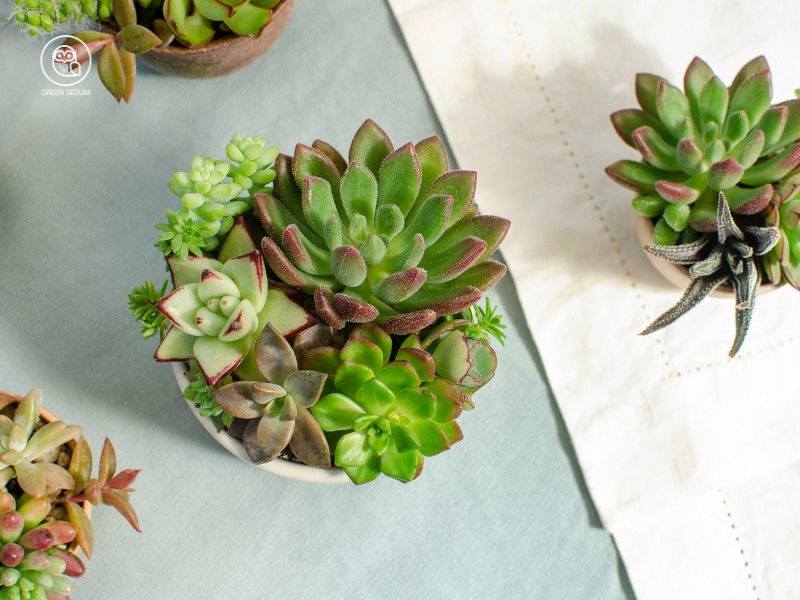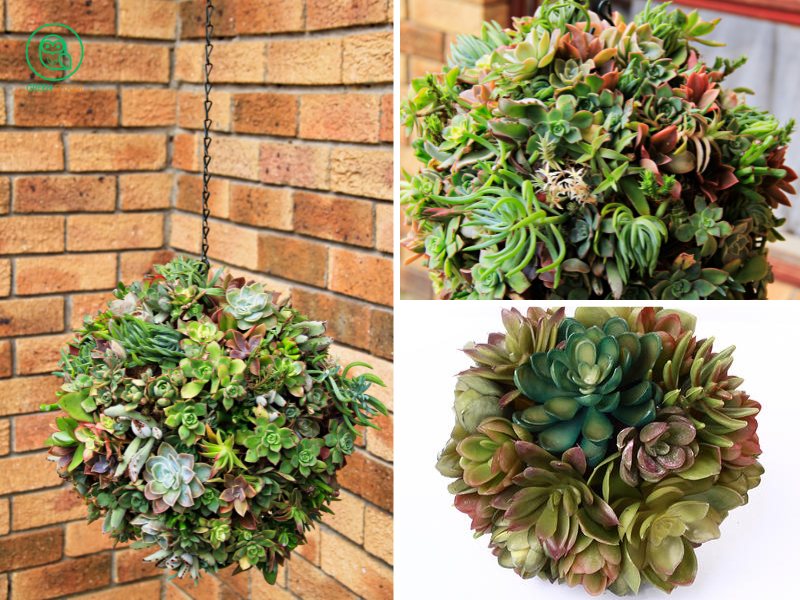Have you ever wondered how to make a succulent arrangement that’s both eye-catching and balanced? Standing in front of dozens of charming succulents can feel overwhelming—how do you pick the right ones and arrange them beautifully? You might worry about the layout not looking cohesive or the plants growing at different rates. Should you mix leaf colors or stick to a minimalist or vibrant theme?
Don’t stress! Learning how to make a succulent arrangement is easier than you think. With a little creativity and the simple tips I’m about to share, you’ll be able to craft gorgeous displays that turn heads, whether they’re for your indoor space or outdoor garden. Let’s get started!
1. Popular Succulents and How to Choose the Right Ones
If you’re learning how to make a succulent arrangement, selecting the right types of succulents is essential. The key is to pick resilient, easy-to-care-for varieties that thrive in your environment. Here are some popular options to consider:
- Echeveria: These are the stars of the living room! With their rosette-shaped leaves resembling roses, they come in a range of colors, from lush green to soft pink. Echeverias are not only stunning but also incredibly low-maintenance.
- Sedum: Known as the “wild child” of the succulent family, Sedums are perfect for ground cover or hanging planters. Their small, water-storing leaves often grow in spreading clusters, adding texture to any arrangement.
- Crassula: Ever noticed a “jade plant” in Feng Shui decor? That’s Crassula! With thick, glossy leaves, this plant exudes elegance and strength, making it a standout choice.
Haworthia: If you’re drawn to unique designs, Haworthia is a must-have. Its striking white-striped leaves look like they’ve been “highlighted,” giving this mini succulent the vibe of a tiny supermodel.
Don’t let their cuteness overwhelm you into making random picks! When learning how to make a succulent arrangement, there are key factors to consider for a harmonious and eye-catching mix:
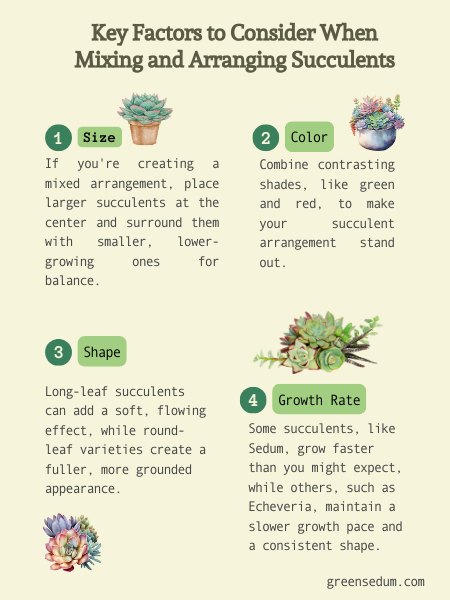
Choosing the Right Pot and Essential Tools
When you start creating a succulent arrangement, the pot and tools are essential elements that you can’t skip. First, choose a suitable pot.
Shallow, wide pots are ideal as they allow the plants to grow freely and thrive. You can find pots with cute designs that will add a charming touch to your living space, but don’t forget to check if they have drainage holes! Without drainage, your succulents may end up “drowning” despite your care.
Next, let’s talk about the basic tools you’ll need so you don’t feel lost when starting the project. A layer of clay pebbles or pumice at the bottom of the pot will help with proper drainage.
Of course, you’ll need soil for your succulents, but make sure to pick a light, well-draining mix that allows the plants to breathe. If you want to keep things neat and tidy, don’t forget to have a small brush on hand to clean out the crevices of the pot or gently adjust the plants after you’ve finished arranging them.
A small spoon can also be very useful for filling the pot with soil without getting your hands dirty. And with that, you’ll be ready to create a beautiful little garden in your pot!
2. How to Make a Succulent Arrangement Based on Color
Succulents are stunning plants that offer an incredible variety of colors, making it easy to create unique and captivating displays. Learning how to make a succulent arrangement based on color allows you to design visually striking setups that brighten your living space.
By pairing complementary or contrasting hues, you can craft arrangements that are both harmonious and vibrant. Here are some creative color combination ideas to inspire your next project!
2.1. Monochromatic Succulent Arrangements
You can start by creating monochromatic arrangements, which means using succulents with similar colors, even if they come in different shades. For example, you can choose succulents with varying shades of green, from light to dark, or pick plants with different hues of purple. When creating a monochromatic arrangement, be sure to incorporate different shapes and textures to add interest and depth to the space.
Example: Choose a few Senecio radicans with bright green hues and pair them with a Crassula tetragona with darker green leaves to create a gentle contrast while maintaining a dominant color.
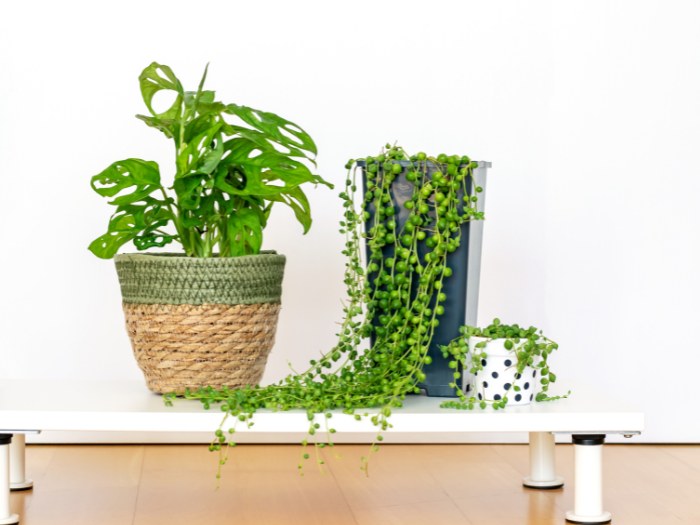
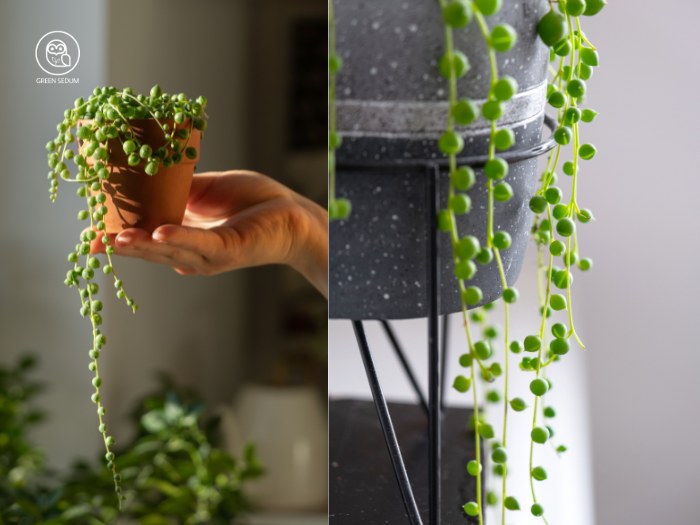
2.2. Analogous Color Succulent Arrangements
Another approach is to create an arrangement with colors next to each other on the color wheel. This method helps succulents blend together naturally and softly. Similar colors will form a cohesive and soothing overall look.
Example:
Use succulents in yellow, orange, and green shades. You could combine Golden Sedum, Peanut Cactus with warm orange tones, and Aloe Vera with green leaves. This will definitely create a space full of light and vitality.
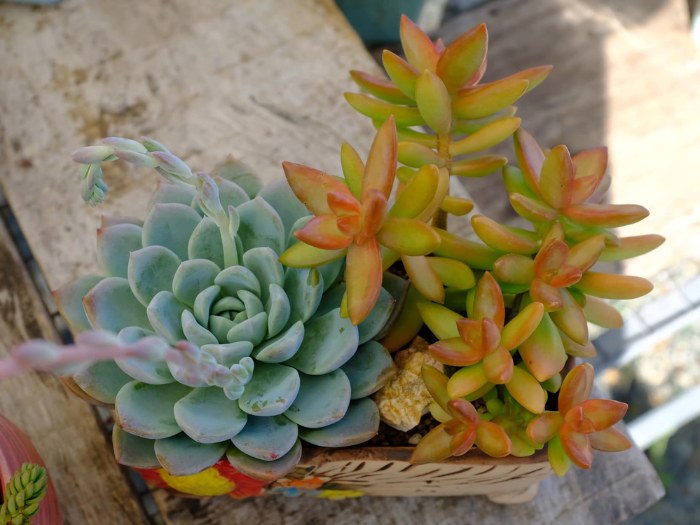
2.3. Complementary Color Succulent Arrangements
This is a fun method where you select succulents with colors opposite each other on the color wheel. Combining contrasting colors helps create a bold and striking look in your space. It’s a great way to make each succulent a focal point in your arrangement.
Example:
Red and Green: The combination of Echeveria agavoides (red) and Crassula ovata (green) creates a strong, eye-catching contrast.
Blue and Orange: Using a blue Agave combined with Orange Monroe creates a bright, vibrant contrast that draws attention.
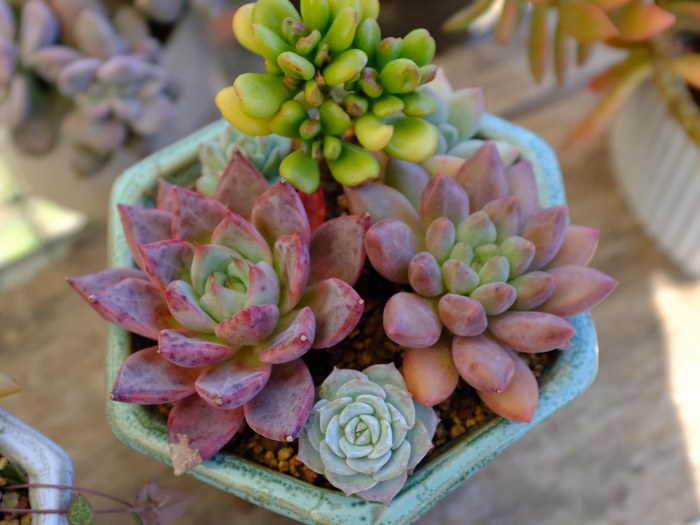
2.4. Choosing Colors that Match Your Space
Finally, when selecting colors for your succulents, always think about how they will harmonize with the surrounding space. If your space follows a minimalist style, go for monochromatic or analogous color schemes. If you want your space to feel lively and fresh, complementary color arrangements like red and green will really highlight your living area.
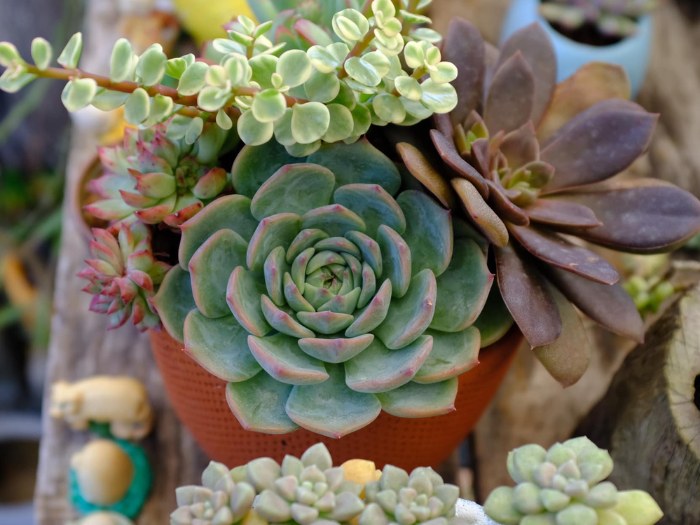
3. How to Arrange Succulents by Height: The “Thriller,” “Filler,” and “Spiller” Formula
To arrange succulents in an aesthetically pleasing and balanced way, it’s important to consider the size of the plants and how to use those from three main categories: “thrillers” (tall, striking plants), “fillers” (plants that occupy most of the space), and “spillers” (plants that cascade down). Below is a detailed guide on how to combine these plant groups to create an attractive arrangement.
3.1. Choose “Thrillers” (The Statement Plants)
Characteristics: “Thrillers” are large, tall, spiky, or uniquely shaped plants that serve as focal points in your arrangement. These are the first plants you want people to notice.
Example: You can select bold succulents like Agave, Aloe Vera, or Echeveria in striking colors such as red or purple.
Tip: Ensure your “thrillers” stand out prominently and aren’t overshadowed by other plants in the arrangement.
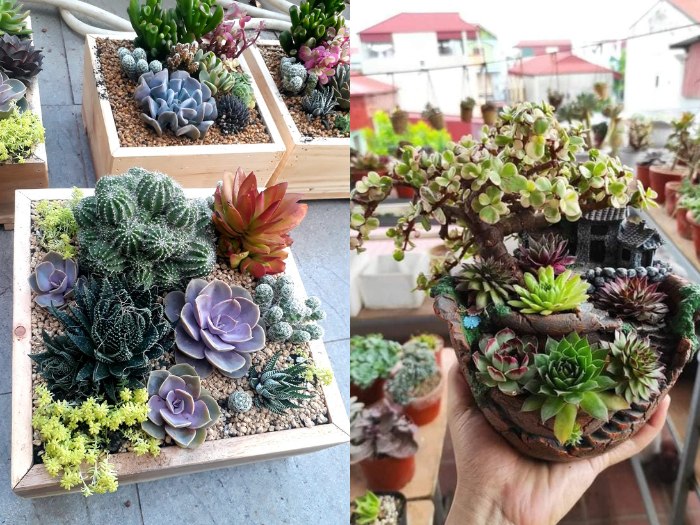
3.2. Choose “Fillers” (The Supporting Plants)
Characteristics: “Fillers” occupy most of the space in your arrangement. While they are not the focal point, they should still be visually appealing and complement the colors and textures of the “thrillers.”
Example: You can use plants like Senecio Radicans, Sedum, or Crassula to fill in gaps and create a cohesive base for the “thrillers.”
Tip: Select plants with textures and colors that harmonize with the “thrillers” to achieve a balanced and uncluttered look. You can mix and match different types of plants as long as they don’t overshadow the main statement plants.
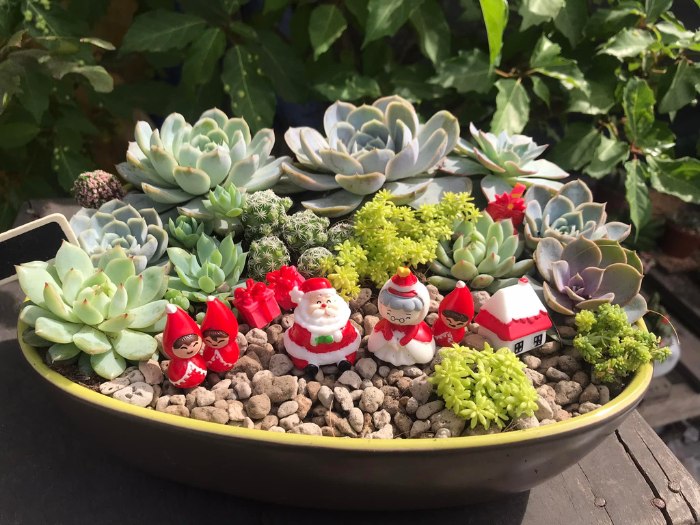
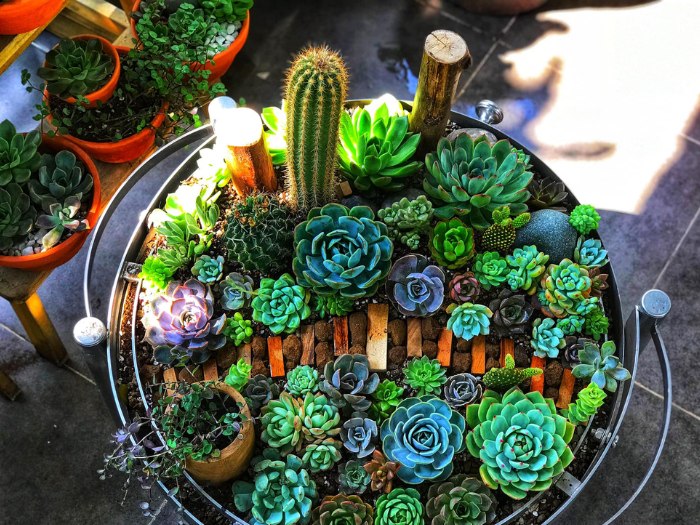
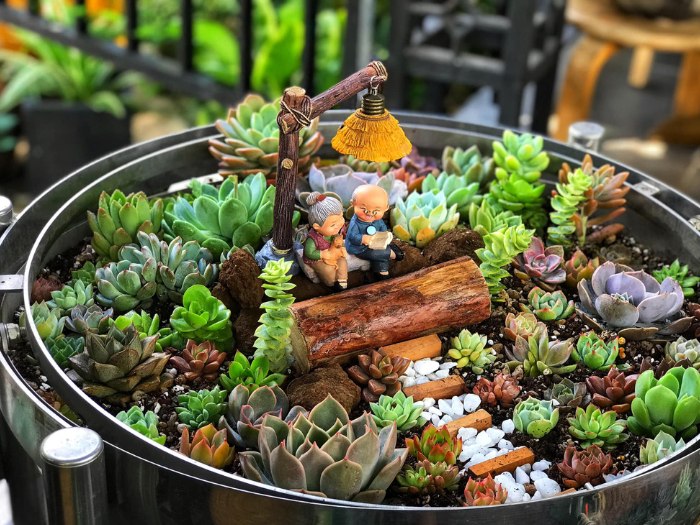
3.3. Choose “Spillers” (The Cascading Plants)
Characteristics: “Spillers” are plants that naturally cascade over the edge of the pot, creating a soft and natural appearance. They help to soften and complete your succulent arrangement while also covering the rim of the pot, making the entire display look more polished and visually appealing.
Example: Plants like String of Pearls, String of Bananas, or Sedum Burrito are excellent choices for the “spillers” category.
Tip: Ensure that your “spillers” drape over the pot’s edge in a natural and attractive manner. They will add depth and dimension to your arrangement.
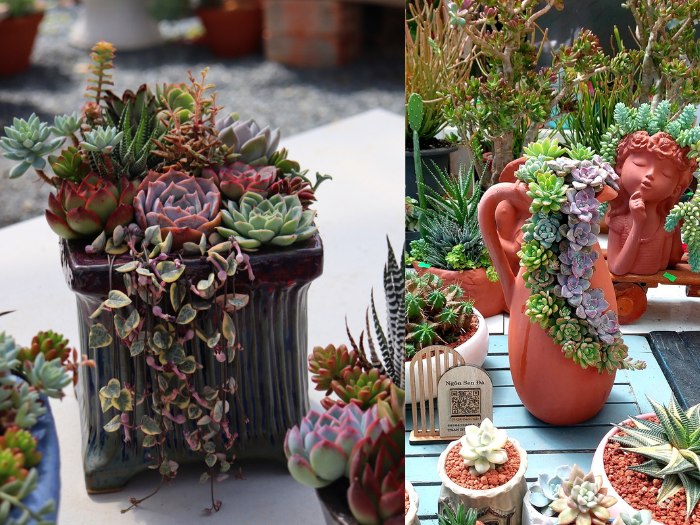
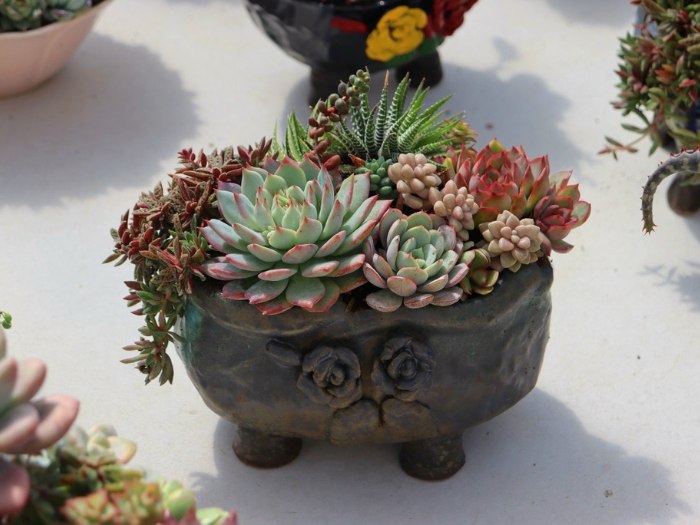
3.4. Overall Layout
Plant Arrangement: Start by placing the “thrillers” at the center or the back of the pot, depending on the pot’s shape. Next, add the “fillers” around the “thrillers” to create fullness and balance. Finally, position the “spillers” to cascade over the edges of the pot, giving a soft and natural finish to the arrangement.
Lighting and Placement: Ensure your arrangement is placed in a spot with adequate light so the plants can thrive and maintain their vibrant colors.
Additional Tips:
- Color Coordination: You can use analogous color schemes (colors close to each other on the color wheel, like green, blue, and purple) or complementary color schemes (colors opposite each other on the wheel, like red and green, or orange and blue).
- Texture Variety: To make your arrangement more visually appealing, mix plants with different textures, such as thick leaves, soft foliage, or uniquely shaped plants.
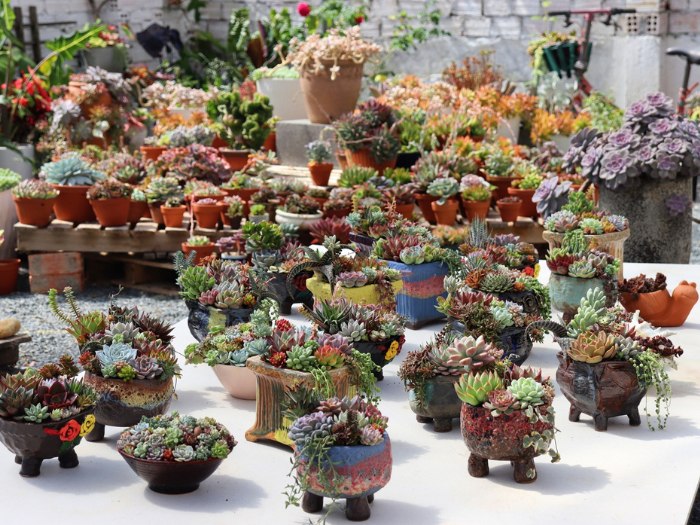
>>> Read more: The Do’s and Don’ts of Mixing Succulents in a Single Pot
4. Adding Other Plants to Your Succulent Arrangement
To make your succulent arrangement more striking and diverse, consider incorporating other types of plants such as cacti, ornamental grasses, herbs, or drought-tolerant flowers. For example, small cacti can add charm, larger cacti bring boldness, while plants like Osteospermum or Blue Fescue enhance color and texture.
Lavender, rosemary, salvia, and yarrow are not only beautiful but also easy to grow alongside succulents, both indoors and outdoors. Sedum varieties like Sedum hispanicum, Sedum rupestre, or Sedum sexangulare pair perfectly with Sempervivum to create a harmonious and stunning garden.
This idea adds height, color, and texture while creating unique garden corners or potted arrangements—perfect for your living space and Instagram-worthy photos!
5. Tips for Choosing Plants and Pots for Succulent Arrangements
Match Plants with Similar Light Requirements
When creating a succulent arrangement, understanding the light needs of each plant is crucial. While most indoor succulents thrive in bright light, individual species may have specific requirements.
For example, Sansevieria is well-suited for low-light environments, whereas Sedum nussbaumerianum requires full sun to maintain its vibrant colors and compact shape.
When designing an arrangement, make sure to select plants with similar light needs. This ensures healthy growth and creates a harmonious, visually pleasing display.
To accurately determine the light requirements of your succulents, you can check resources like World of Succulents or San Marcos Growers. A quick Google search can also provide detailed information on each plant’s light needs.
For outdoor planting, choose plants that can tolerate the sunlight conditions in your garden. Some succulents thrive in intense sunlight, while others may wilt in prolonged shade. Combining succulents with similar light needs will keep your arrangement vibrant and long-lasting.
Leaf Thickness and Watering Needs
When pairing succulents, opt for plants with similar watering needs to ensure healthy growth. An easy way to gauge a plant’s water requirements is by observing its leaf thickness. Succulents with thick leaves typically need less water, whereas those with thinner leaves require more frequent watering.
Feel free to mix and match succulents as long as their light and water needs align, and make sure to use well-draining soil and proper watering techniques.
Choosing the Right Pot for Your Succulents
A key factor in creating a beautiful succulent arrangement is selecting the right pot. Pots are not just containers but also enhance the aesthetic appeal of your plants. Consider pots made of terracotta, ceramic, glass terrariums, or even upcycled containers—all excellent options.
When choosing a pot, ensure it is slightly larger than your succulents, about 5–10% larger. For example, an arrangement in a glass terrarium can create a striking effect. For desk decorations, terracotta or driftwood planters add a rustic, natural charm.
Outdoor Succulent Arrangements
For outdoor arrangements, consider using larger pots like cast-metal containers or even repurposed vintage items. To add visual interest, start by planting the largest succulent in the center and surround it with smaller plants. Fill in gaps with tiny succulents for a unique, abundant arrangement.
Small Pots for Indoor Settings
For smaller arrangements, opt for mini terracotta pots, hanging planters, or handcrafted wooden containers. These setups not only beautify your living space but also make great gifts for friends and family. Succulents in small pots are ideal for decorating living rooms or adding a touch of charm to your desk.
With each pot choice, you bring a distinct style to your living space—don’t be afraid to get creative and experiment!
6. Conclusion
In summary, learning how to make a succulent arrangement is a fun and rewarding way to bring life and style to your home. Succulents are low-maintenance plants that effortlessly enhance any space with their natural charm and freshness. Whether you’re a beginner or an experienced gardener, creating your own arrangement allows you to express your creativity. Get started today and turn your space into a vibrant, cozy haven filled with greenery!
>>> Find out more: Where to Find Unique Planters for Succulents (and DIY Ideas Too)
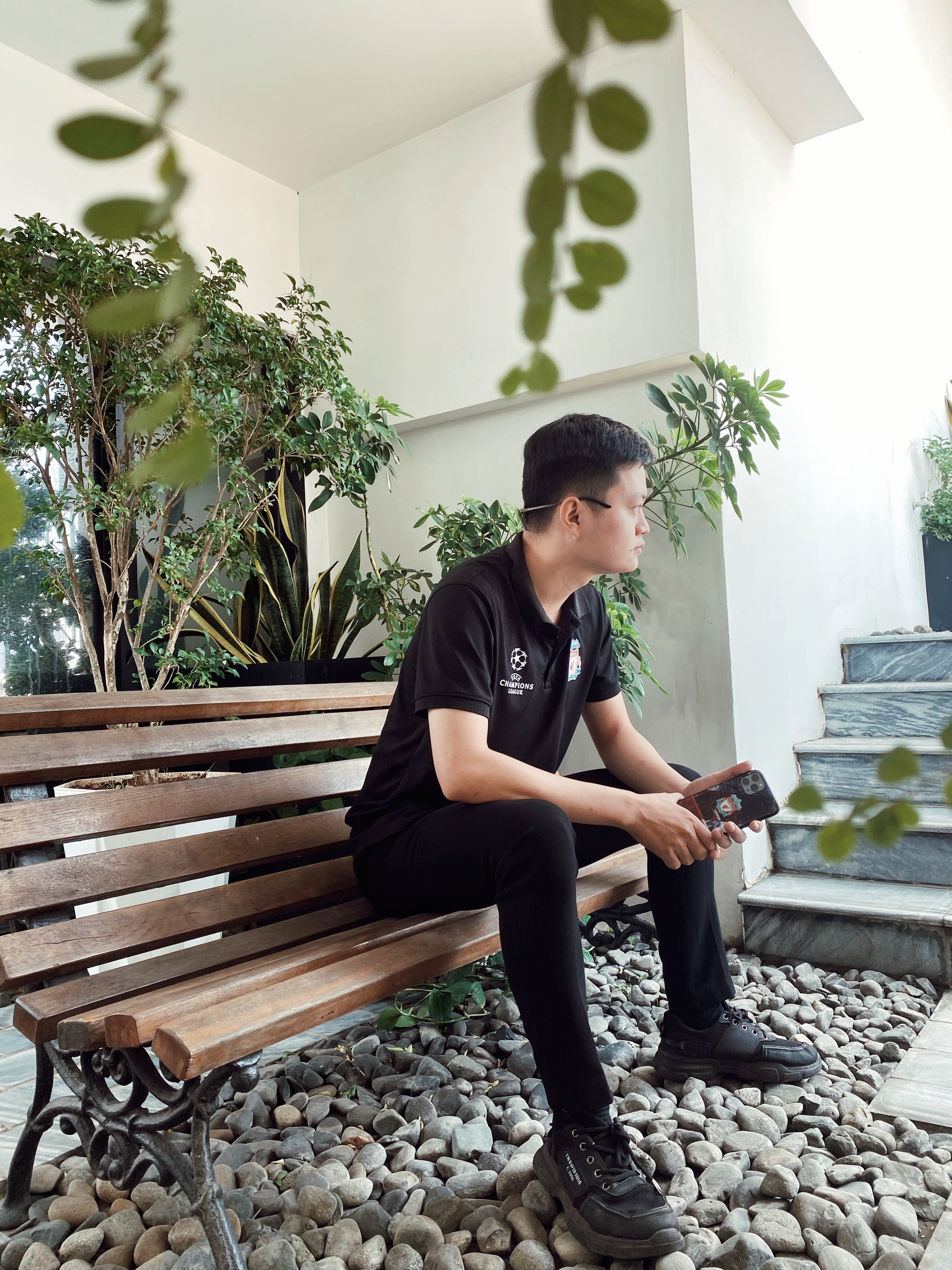
I’m Will Bernan, a gardening enthusiast with over 9 years of experience in succulents, indoor plants, and sustainable living. I also manage SEO for eco-friendly textile brands, promoting fabrics like bamboo and organic cotton.

